Cat Losing Hair? Here Might Be The Reasons Why
It can be pretty alarming to find your cat licking themselves bald - or showing patches of missing fur! So if you're wondering - why is my cat losing hair? - you're in the right place. Let's dive into all the reasons why & what you can do to prevent it.
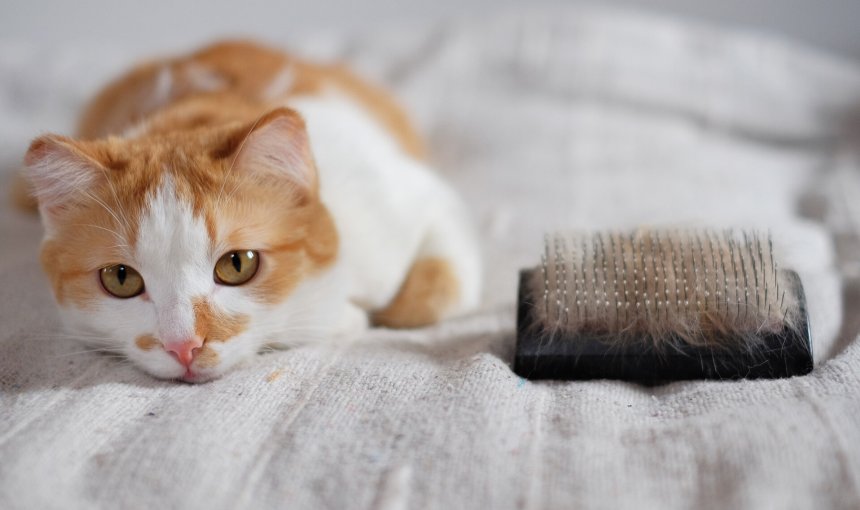
If you’ve found yourself vaccuming cat hair off your couches, carpets, curtains, clothes more often than usual – you might find yourself wondering: is my cat losing hair? Am I seriously dealing with a case of cat alopecia here – or is it normal?
And yes, to an extent, some amount of hair shedding is 100% normal for cats. (Just like it is for us.)
But in other cases, your cat might be losing hair due to a serious underlying health issue. Which include a whole bunch of causes, ranging from parasitic infections to stress to chronic conditions like hyperthyroidism.
So with this spectrum of possibilities, let’s break down the reasons you’ve got a cat losing hair all over your home – and how you can catch on to an illness early by keeping an eye on how well they’re sleeping, plus the impact this has on their energy levels.
Why is my cat losing hair?
Hair loss in cats is medically referred to as “alopecia” – and in many cases, it’s due to multiple causes. Here are some of the (slightly) less concerning ones:
- Age. With kittens, it’s more common when they’ve just been born.1
- Breed. Some cat breeds are inherently “hairless” – like Sphynx cats. Other cat breeds are born with thin coats which they eventually lose over time (like Siamese cats). Still others (like Cornish Rex cats) are born with full coats, which eventually sheds over time.
- Habits. Outdoor cats might get into fights with other cats (and animals) over territorial disputes. Which might lead to a few “battle scars” – including their fur.
- Pregnancy. In pregnant cats, hormonal changes might trigger some hair loss. Which usually isn’t permanent and may regrow.
Read more:

⚠️ Now one of the first concerning signs if you’ve got a cat losing hair is if you notice some patches of their fur thinner than the rest of their coat.
Plus, if you’re observing your cat losing hair on top of other symptoms of sickness – that’s when it makes sense to drop by your local vet.
| Signs of illness in cats – besides just hair loss |
| Sores |
| Scabs |
| Red, irritated skin |
| Bald patches |
| A loss of appetite |
| A drop in your cat’s energy levels |
| A bloated, distended belly |
All of which can signal that your poor cat’s struggling with an allergy, infection, or some other serious health condition.
Because in adult cats, hair loss may also be likely because of:
A change in routine
Boredom, stress, and anxiety can all cause your cat to overgroom themselves.2 Which, with time, might lead them to develop scabs and lose hair in patches around their body.
- This could be a change in routine like you shifting apartments, bringing home a new pet (or baby) or your neighbors beginning a construction project.
- If your outdoor cat now has to stay indoors, they might feel bored and frustrated from the lack of enrichment.
- Psychogenic alopecia is a behavioral issue where your cat might overgroom themselves due to anxiety.3
Read more: Your 100% Stress-Free Guide To Moving Cats To A New Home

Grooming helps calm your cat down – it’s comforting in the same way Mama Cat might’ve done it when yours was still a kitten. It can help relieve their anxiety when they feel “threatened” (either by your new puppy or the vaccum next doors.)
⚠️ On top of this, if your cat is dealing with an infection, allergic reaction, or pain – it can cause them stress as well. (Leading to more overgrooming – and more hair loss.)
Plus, your cat is unlikely to seek out your attention as they try and handle a sickness themselves. (Making it easy for you to miss out on the signs until their conditions has worsened.)
Pain
If you’re now wondering – my cat has patches of fur missing and sores…what gives? – it might be due to pain. In fact, overgrooming a specific part of their body might lead to hair loss as your cat tries to relieve pain in that area.4
So a cat with joint pain might overgroom a particular limb – or even end up with a bald spot on their sides or belly from a stomach ache.
This is where your vet might begin by:
- Thoroughly examining your cat to catch on to a pattern of hair loss.
- Asking you about your cat’s everyday activity – and whether you’re noticing a change. (Since mobility-affecting issues like arthritis can lead your cat to be less active with time.)
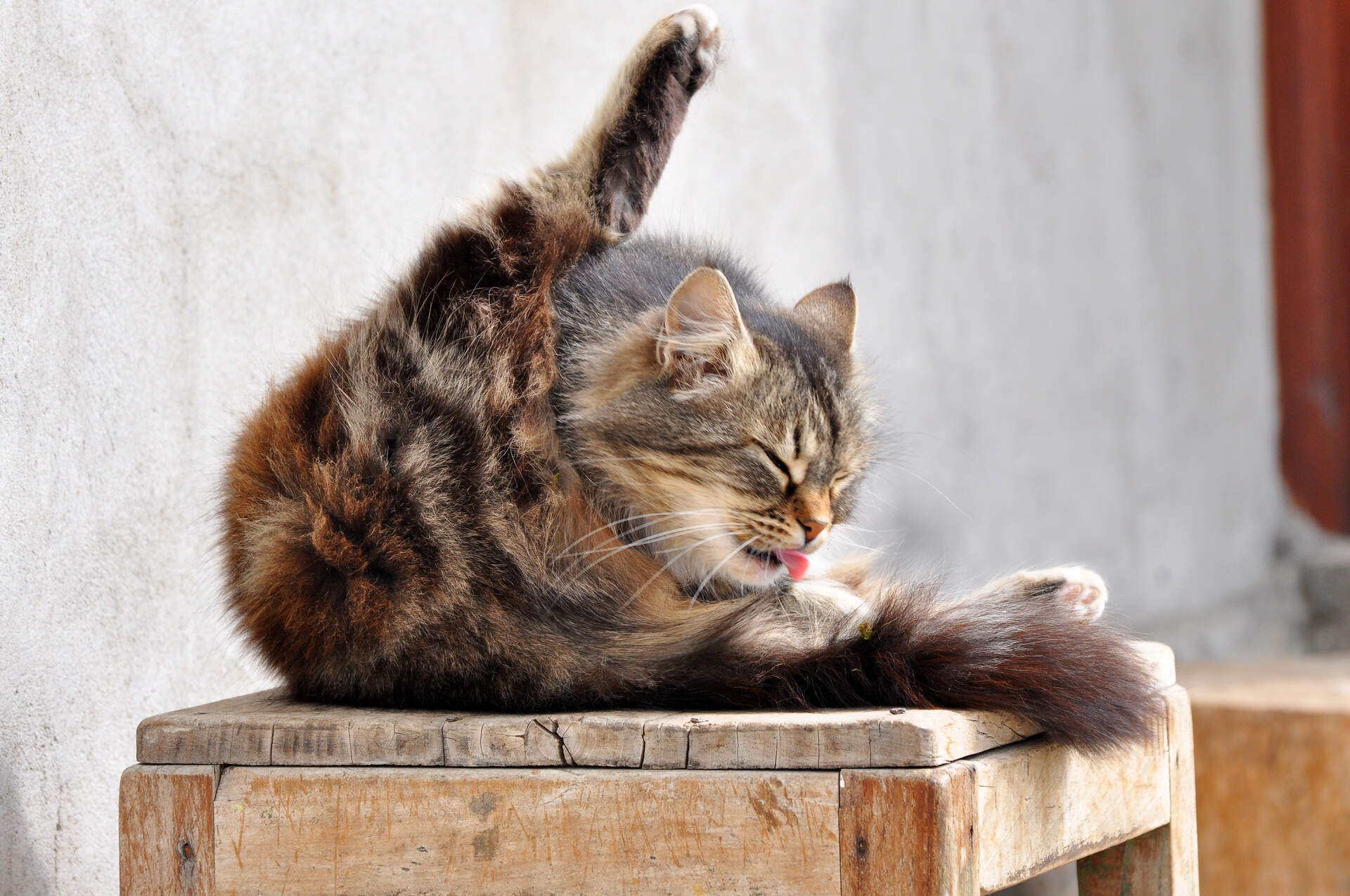
💡Now you could jot down how frequently your cat is on the move in a journal.
Or you could rely on the actionable data you’ll get from an Activity Tracker that’s actually built for cats. So you can have a more productive conversation with your vet.
Either way, it’ll help you stay accountable to monitoring your cat for any changes in their behavior. Helping you detect health issues early and get them to a vet before they worsen.
Infection
Alopecia in cats might also be caused by infections – especially from these common sources:
- Bacteria, including Staphylococcus
- Yeast, including Malassezia
- Ringworm
- Parasites (including ticks, lice, and mites)
Even if yours is primarily an indoor cat, they’re still vulnerable to these pesky critters in your home. All of these infections tend to make your cat itchy – so they might bite, scratch, and overgroom themselves until you’ve got a serious case of cat hair loss at hand.5
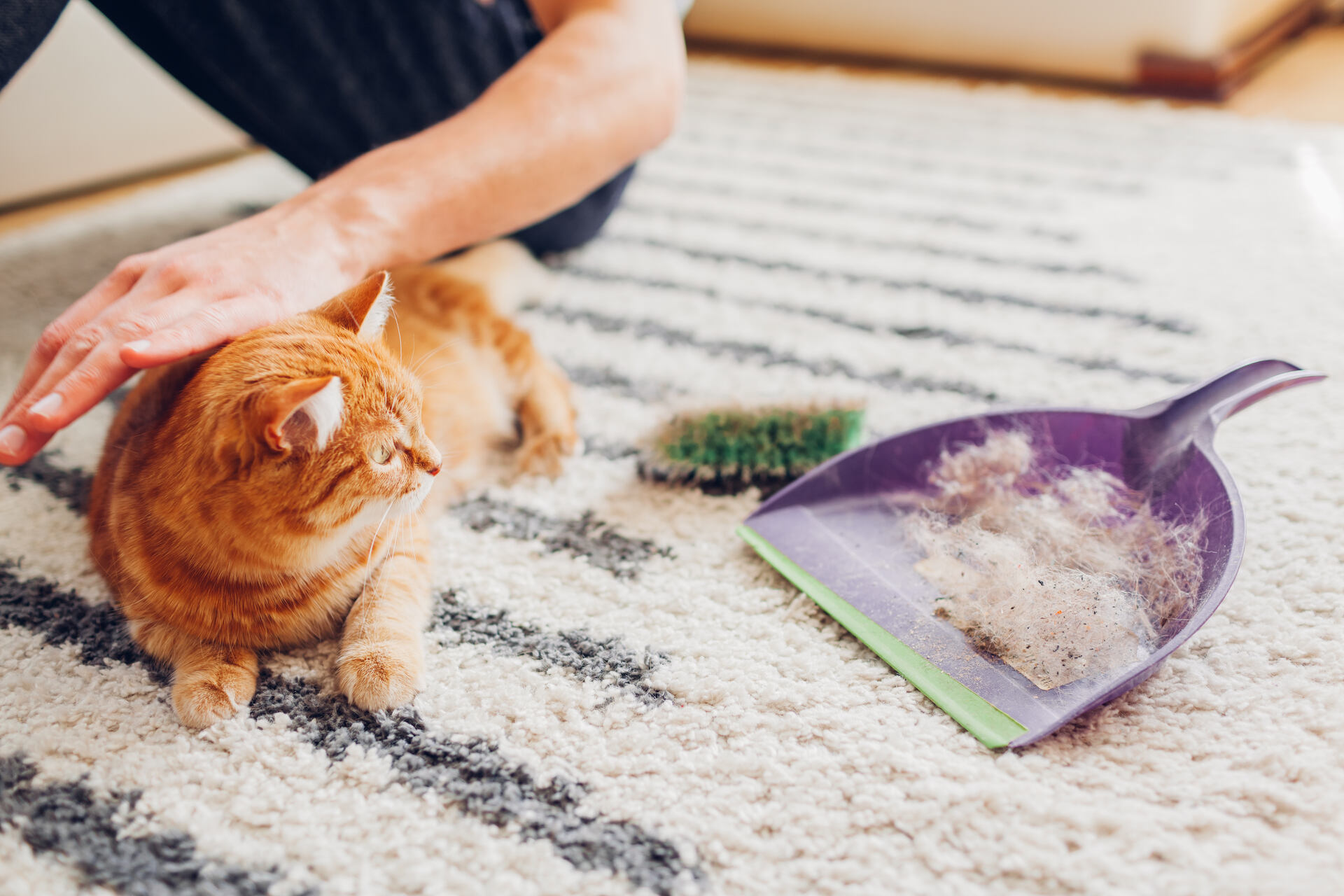
Besides, your cat might be likely to pick up an infection from:
- Other animals they encounter (both indoors and outdoors)
- Contaminated surfaces, including food and water bowls, toys, bedding, and more
- You, since viruses and bacteria can often cling to our clothing – and transfer on to our pets (though not the other way round)
Read more: Can Pets Get Covid? Keeping Your Furry Friends Safe
So if your cat likes to wander the outdoors, it’s possible they’re venturing into areas riddled with parasites. (Like ticks – that tend to be most active around spring, summer, and fall.)
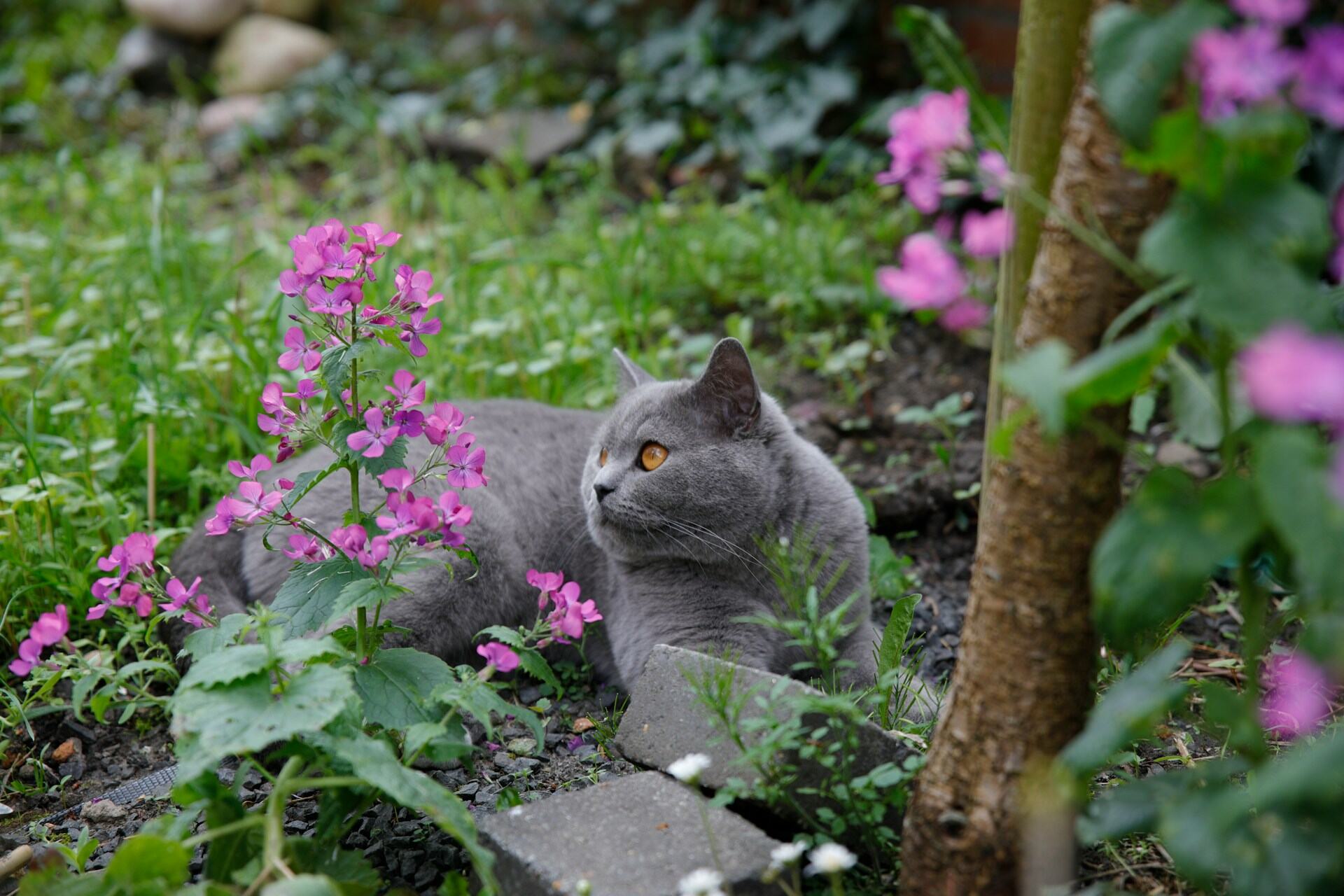
💡 It’s where many cat parents rely on a pet tracking device – especially one that’s powered by GPS – to monitor where their buddies are off roaming.
Which can help you figure out:
- The exact spots your cat’s off wandering to (and if those are pest-infested areas, like open fields and woodland)
- How to set up a “safe zone” around your home and backyard – which sends you an escape alert on your phone if your cat is trying to sneak past it. (A great option if you don’t have a physical fence.)
- Where to look first if your cat goes missing.
- Mark out “danger zones” (like tick-riddled spots) in your area – and warn other cat parents.
Read more: How To Prevent & Get Rid Of Ticks On Cats (For Good)
Allergies
Besides infections, another reason you’ve got a cat losing hair all around your house might be allergies.6 These include:
- Environmental allergens, like pollen, dust, or common household items like cleaning fluids and the like.
- Other parasitic critters, like fleas. In fact, Flea Allergy Dermatitis (FAD) is a common cause for itching and overgrooming in cats. Your poor cat might even end up vomiting up a hairball from swallowing so much of their fur!
- Food allergies to specific ingredients, which tend to be less common in cats – but which can cause them to scratch and groom themselves excessively.

⚠️In some cases with fleas, your cat might not seem to have any at first glance. (Mostly because they’ve groomed them off.)7
Instead, you might see bald patches from overgrooming – along with other signs like redness, irritated skin, scabs, and sores along their skin and tail.
- This is why vets recommend regular flea treatment for your cat on a monthly basis.
- Plus, besides fleas, other environmental allergens might cling to your shoes and clothes – and then transfer on to your cat.
So make sure to check your cat frequently for fleas and ticks – and invest in medicated, cat-friendly shampoos and brushes to keep their fur safe. Treat your house and yard as well by regularly washing bedding and other surfaces your cat sleeps on.
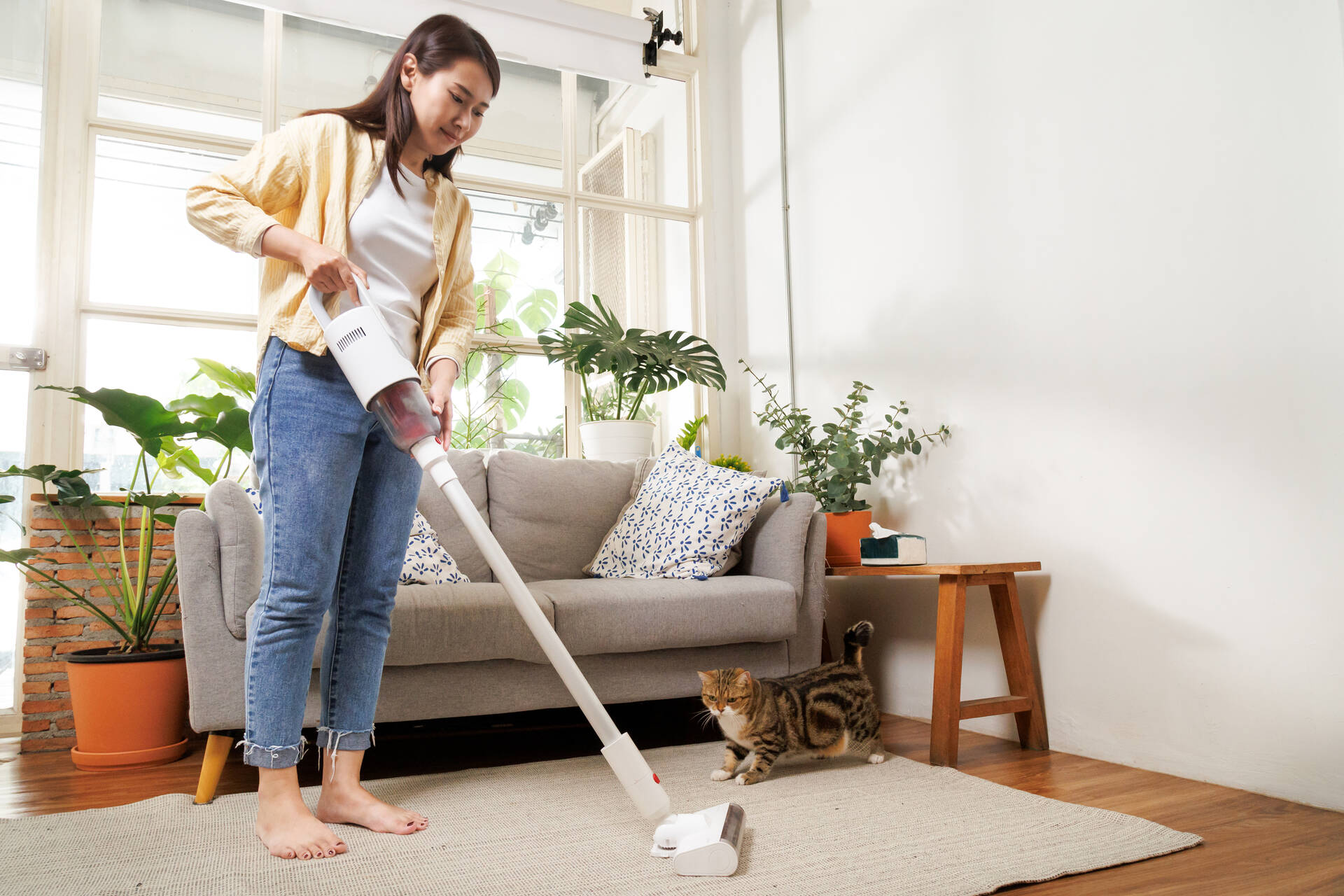
It’s also a good idea to check whether your cat seems to be itching the most around mealtimes – where a food allergy might be responsible. A drop in your cat’s appetite is another warning sign they might not be feeling well.
Read more:
- Cat Food Allergies: What To Watch Out For
- Cat Pollen Allergy: What To Do If Your Cat Is Allergic to Pollen
- What Can Cats Not Eat? (And Why Not?)
Medical conditions
Finally, a whole range of health conditions may cause your cat discomfort – leading them to overgroom themselves and lose their hair as a result.8
Including:
- Urinary tract infections (UTIs), which involve an inflammation of their bladder, kidneys and/or other urinary organs. Watch out for signs like your cat peeing around the house – or too little in general.
- A gastrointestinal disease, which might cause stomach pains and upset. Your cat might lick their belly areas excessively as a result, leading to patches of hair falling out.
- An infection of their anal organs, which might lead your cat to “scoot” or drag themselves around the floor on their butts.
- Hyperthyroidism, which might also cause your cat to be restless and more hyperactive than usual.
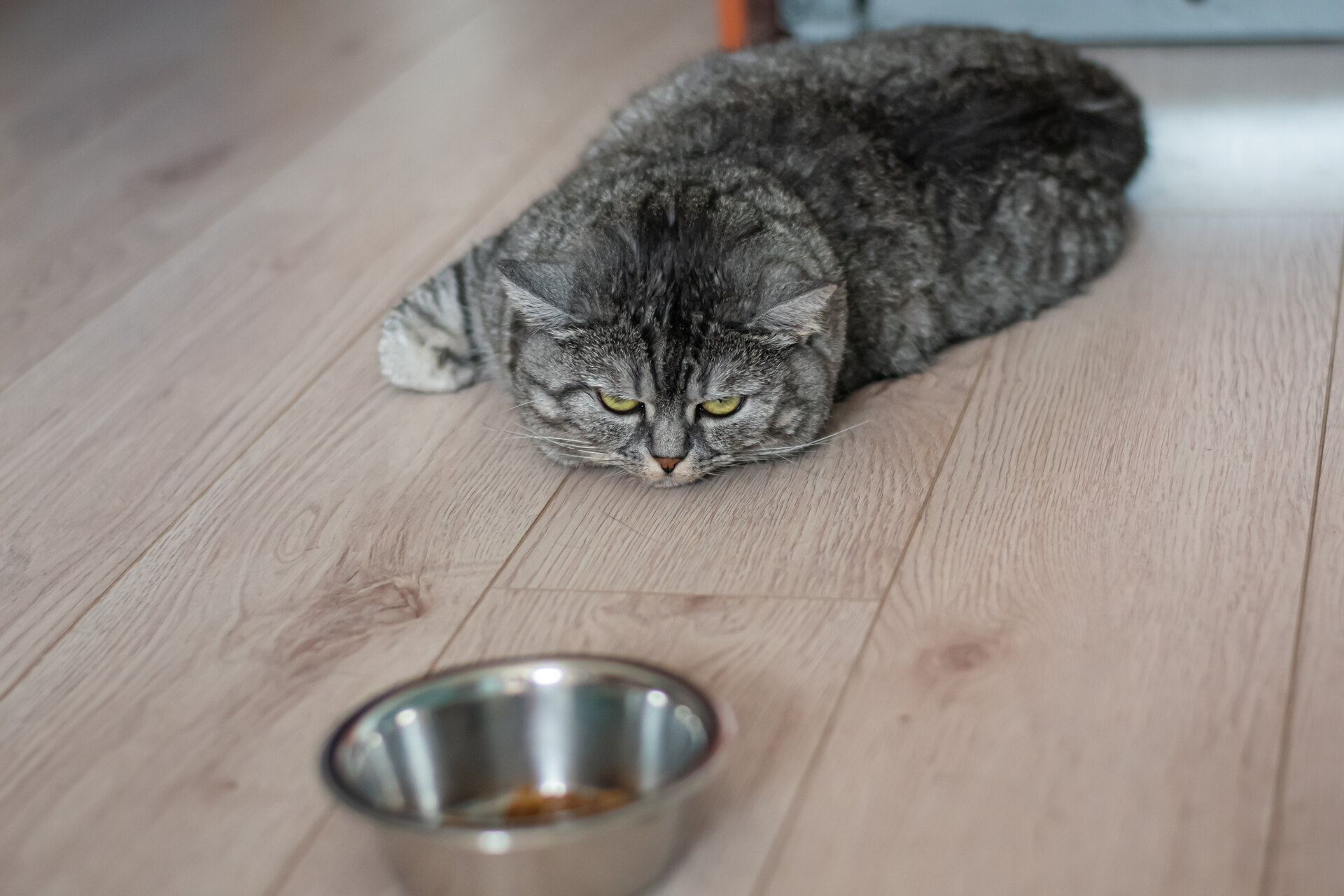
- Cushing’s disease, which is less common in cats, but includes symptoms like hair loss, itching, and skin infections.
- Cancers, including lymphoma and pancreatic carcinoma.
- Diabetes, where skin infections and slow-healing wounds might be common.
- Pancreatic, liver, and adrenal disorders, all of which are linked to more fragile, easily irritated skin in cats.
Read more:
- UTI in Cats: Signs, Symptoms & Steps You Can Take
- Why Is My Cat Peeing Outside Of The Litter Box?
- Cat Drinking A Lot Of Water? Here’s Why.
💡 Now on the bright side, most of these health conditions don’t develop overnight – but rather gradually, over time.
So if you’re monitoring your cat’s behaviors – like:
- Where they’re off roaming,
- How often they’re itching and grooming themselves,
- and how energetic they generally are (or aren’t)
…then you’re more likely to catch on to a health issue early. (And get them to a vet on time.)
How your vet might diagnose & test for cat alopecia
So once you’re at your vet’s office, come prepared with:
- Your cat’s medical history, including any allergies and medications they’re on
- Any recent changes in your cat’s behaviors
- Any recent changes to your cat’s environment
- Whether your cat has a history of seasonal shedding
Next, your vet might thoroughly examine your cat for fleas, ticks, and mites.
- If your cat mostly has hair loss around the base of their tails and lower back, it could be fleas.
- Below the tail hair loss could signal an infection of their anal organs.9
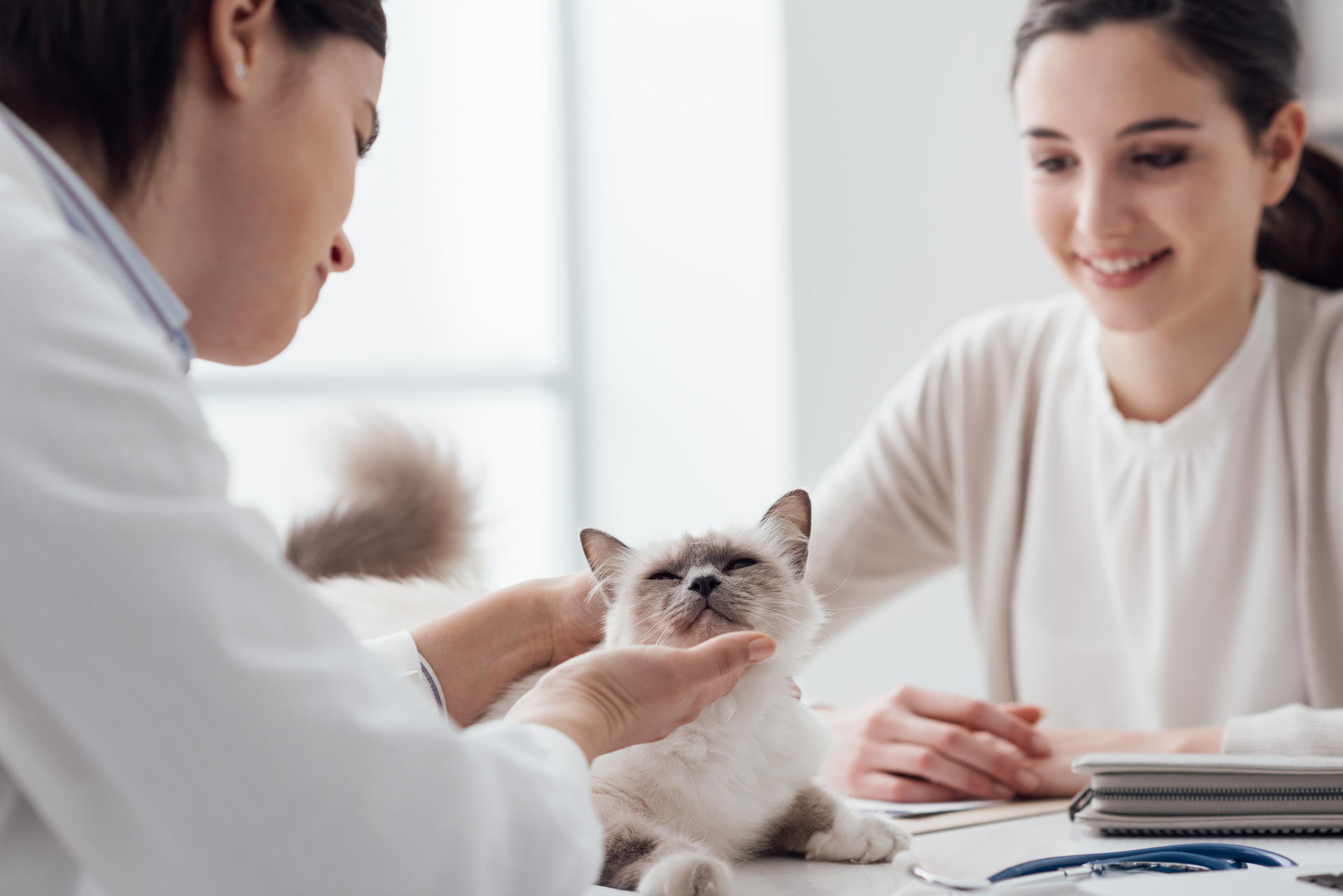
Once that’s done, your vet might perform these diagnostic tests:
- A skin biopsy, or surgically removing a small patch of your cat’s skin to view under a microscope.
- Skin scraping to look for other parasites.
- A blood and/or urine test to rule out health issues like hyperthyroidism or diabetes.
- Allergy testing, including with an elimination diet trial. Your vet might prescribe you a special, hypoallergenic diet for your cat instead.
- Ultrasound imaging to rule out any signs of cancer.
Only once your vet has ruled out all other causes, they might also consider psychogenic alopecia as another possible reason.
Treating alopecia in cats
Now based on what turns up at your cat’s checkup, your vet might prescribe you a solution meant to tackle the underlying cause of their hair loss.
Medical treatments for cat hair loss
- Using a special cone collar can help prevent your cat from biting or scratching at any infected skin. This can help your cat’s skin heal and their hair regrow.
- Medications, including antihistamines, can help reduce itching.10
- Antibiotics can help target specific fungal infections that cause itching and discomfort.
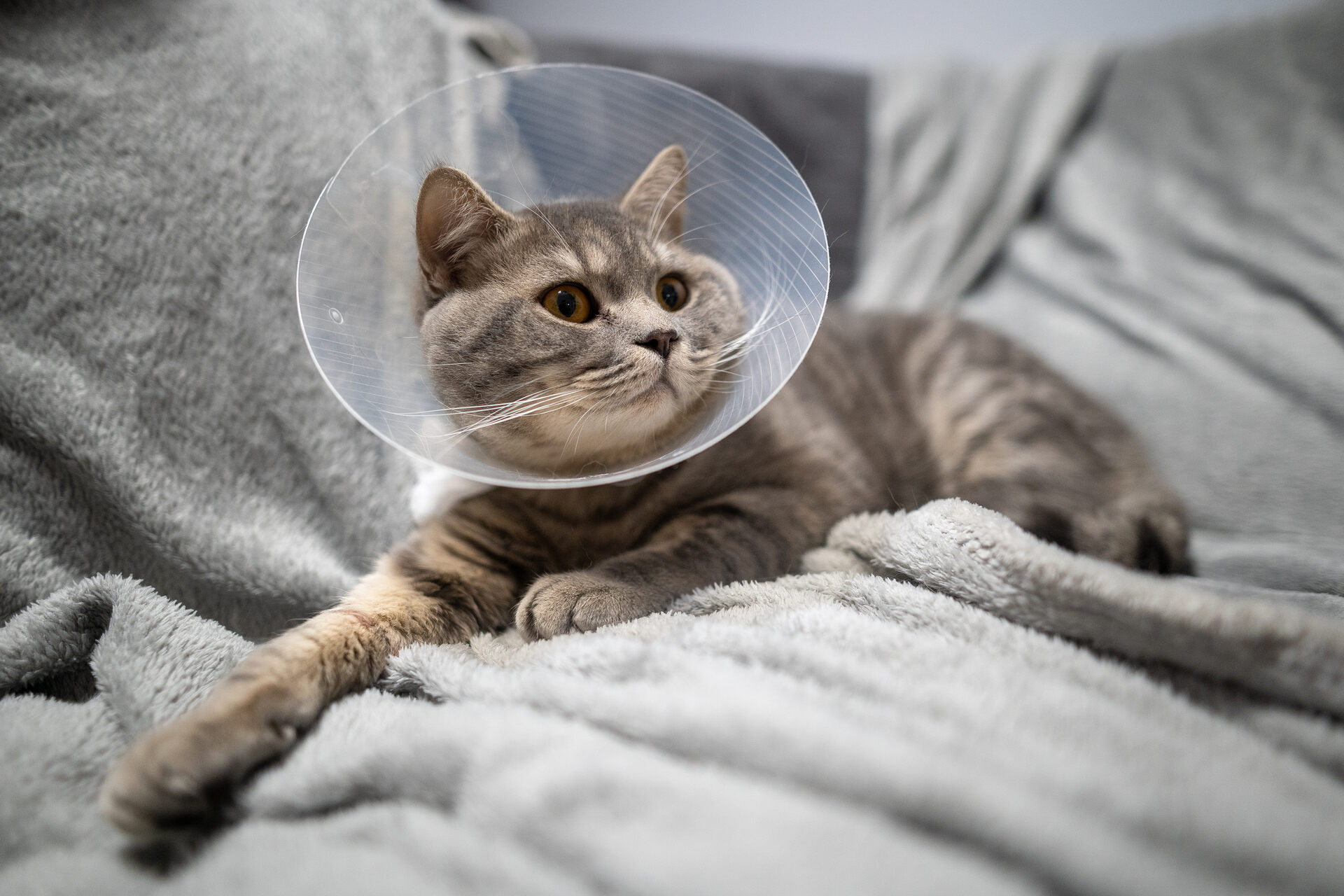
- Medicated shampoos can help tackle parasitic infections.
- An 8-12 week elimination diet, where you remove specific ingredients from your cat’s meals and observe their reactions.
- Steroid creams can also help reduce itching when you apply it to the spots your cat’s been grooming. (Just make sure to prevent your cat from licking off the cream! Here’s where a cone collar can come in handy.)
Home treatments for cat hair loss
- Do a thorough cleanup of your home to get rid of fleas, ticks, and mites. Clean your bedding and other surfaces your cat tends to sleep on. Double check that their food and water bowls are clean and aren’t being shared by other animals.
- Make sure your backyard isn’t too overgrown. (As pests like ticks tend to thrive in thick vegetation.)
- Help your cat reduce their stress with tons of attention, cuddles, playtime, and keeping them occupied while you aren’t around. Scratching posts and food puzzles can keep your cat from getting bored or lonely when you’re not at home.11

- Brush your cat’s coat regularly to prevent any matting or tangling. (Which can be a breeding ground for pests.)
- Monitor what your cat’s been eating. Many harmless (and even healthy) human foods can make cats very sick and trigger an allergic reaction. Cat food brands that are rich in omega-3 fatty acids can help improve their skin and promote healthy hair growth.
⚠️ Unless your vet recommends it, we’d strongly advise against using any skin products made for humans on your cat. In the worst case scenario, it might even trigger their allergies or worsen their infection.
Your vet should be your number one go-to when it comes to managing your cat’s hair loss. They can best help you figure out its underlying cause – and how to treat it and manage it for the long run.
Preventing hair loss in cats: How monitoring their behavior looks like in action
With a little vigilance, you can catch on to a change in your cat’s behavior early. (Which might signal something’s wrong – whether from sickness, infection, or pain.)
But how does that look like in practice? After all, it’s not like you can monitor your cat 24/7 – especially if you actually have shifted apartments or have work, chores, and family to deal with.
So you could:
- Jot down your cat’s symptoms and behavioral changes in a notebook to share with your vet.
- Take a video while your cat is grooming themselves – to catch whether they’re targeting any specific body part (like their tail, rear ends, or elsewhere)
- Monitor your cat’s level of energy throughout the day. If they seem more reluctant around playtime or just seem to be in a slump, it could be a warning sign.
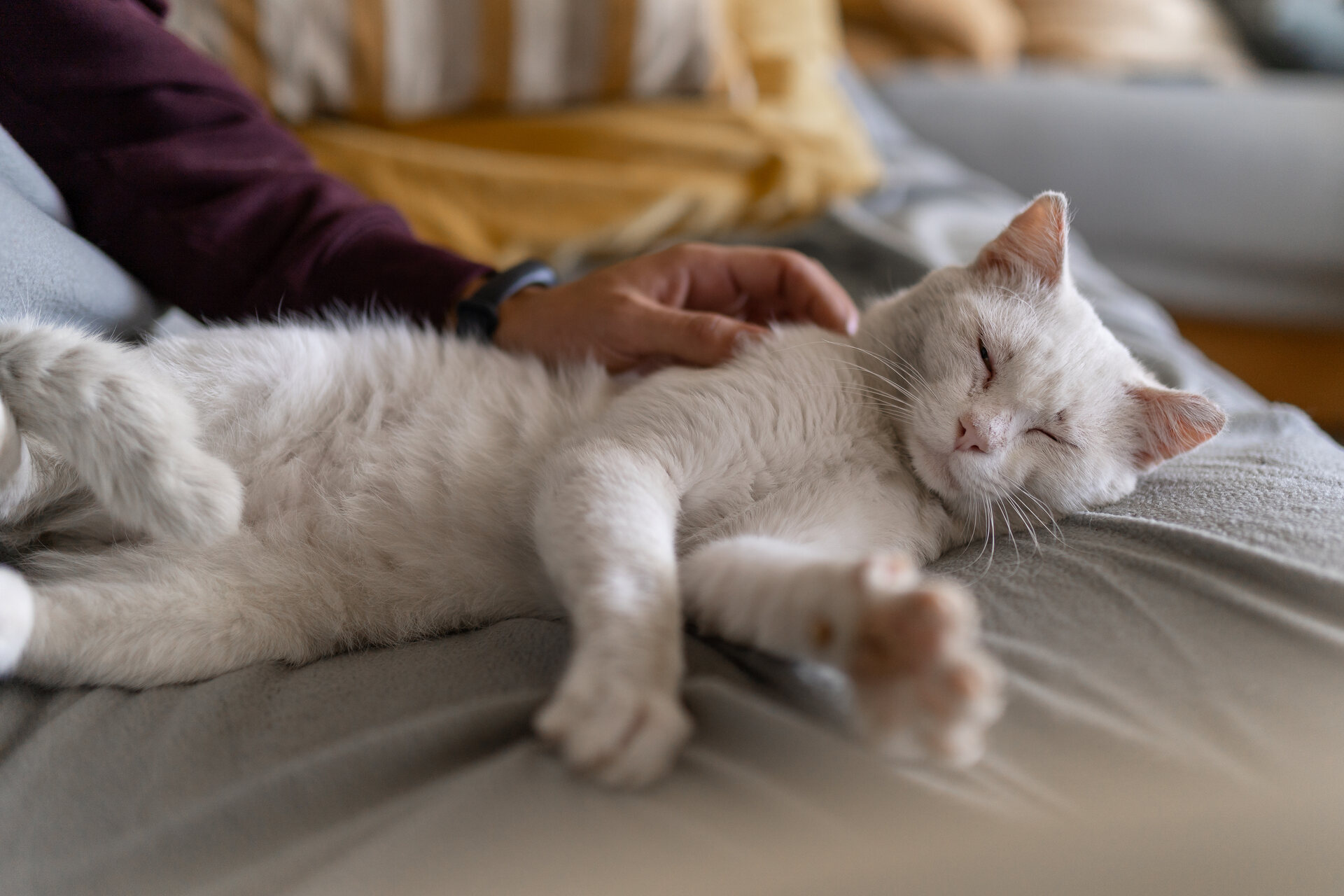
⚠️ But with most cats being super sleepers – clocking in 12-18 hours of snooze time per day – it can be easy to miss out on a drop in their energy and activity.
Plus, your cat might be more likely to hide away to manage any sickness themselves. Which also means grooming and itching at themselves somewhere you can’t see them.
In the long run, this might mean you miss a day of tracking – which becomes another…and another…until it’s too late and your cat’s health has worsened. (And now you’re dealing with a hefty vet bill for a worse health condition than if you’d spotted it early.)
💡This is where the actionable data you get from an Activity & Sleep Tracker for pets can be a lifesaver.
Because changes in your cat’s activity can be one of the earliest signs their health is taking a turn for the worse.
| If your cat is more lethargic or not as active as usual, it could be: | If your cat is more hyperactive than usual, it could be: |
| A bacterial infection | Feline hyperesthesia |
| Heartworm | Hypothyroidism |
| Anemia | Feline AIDS |
| Poisoning | Infectious peritonitis |
| Cancer | A neurological condition |
Besides, monitoring your cat’s sleep can also help you catch on to a health issue early:
| If your cat is sleeping more than usual, it could be: | If your cat is sleeping less than usual, it could be: |
| Pain | Hyperthyroidism |
| A bacterial infection | Anxiety |
| Diabetes | Heart disease |
| Heartworm | Cognitive dysfunction |
| Anemia | A brain tumor |
💡Which is why cat parents around the world – just like you – are investing in Tractive’s life-saving technology and taking an active role in their pets’ health and wellbeing.

With its built-in motion detector, your trusty Tractive device picks up on your cat’s movements throughout the day. (Including while they’re asleep!)
Which can help you figure out:
- What’s a normal amount of activity for your cat
- What’s a normal amount of sleep for your cat
- Whether there’s been an abnormal change in either
- How your cat is doing compared to other, similar cats around the world based on their breed and age
With this data at hand, you won’t need to rely on memory or risk forgetting some important details at the vet’s.
Which, in the long run, may even help save your cat’s life.

All this in one device – which helps you track your cat’s location and health – all from the comfort of your couch.
Why your cat is licking themselves bald – and what to do
Our cats can act in some bizarre ways at times – but you don’t want to mistake a cry for help for something cute or funny instead.
So if you’re dealing with a cat losing hair at home from overgrooming, here might be some of the more serious reasons:
- Stress, boredom, and anxiety from a change in routine.
- Pain, especially in a specific body part.
- Infections, from pests like mites, ticks, and even lice, as well as bacteria
- Allergies from their environment, including dust, pests, pollen and even household cleaning products
- Medical conditions, including hyperthyroidism, Cushing’s disease and even some cancers.

Now in many cases, cat hair loss might also occur from less concerning reasons – including your cat’s breed and genetic history, as well as their outdoor wandering habits. (Like a fight with a fellow animal.)
In some cases, your cat might even experience seasonal shedding.
⚠️ Which is why it makes sense to look out for other signs of illness besides just hair loss. Including:
- Red, irritated skin
- Sores
- Scabs
- Vomiting (especially hairballs)
- Patches of hair that seem thinner than their full coat
And most importantly:
- A change in your cat’s energy levels – both from their activity throughout the day, as well as their sleep. Which, besides hair loss, can signal a more serious health condition.
And if you’ve invested in a Tractive device, you now have your cat’s activity and sleep data at hand to catch on to a health issue early and get them to a vet for a checkup right away.


Track your cat’s wellbeing
See how they’re doing at a glance with Wellness Score. Know if they’re getting enough exercise. Spot nap patterns. Detect issues early and keep them healthy.
Want a vet’s take on why your cat might be losing hair? Here’s Dr. Kim Hammond from the Falls Road Animal Hospital weighing in:
And if you’ve liked this post, share it with a friend or a loved one – and let’s help build a safer, kinder world for our furry friends together.




